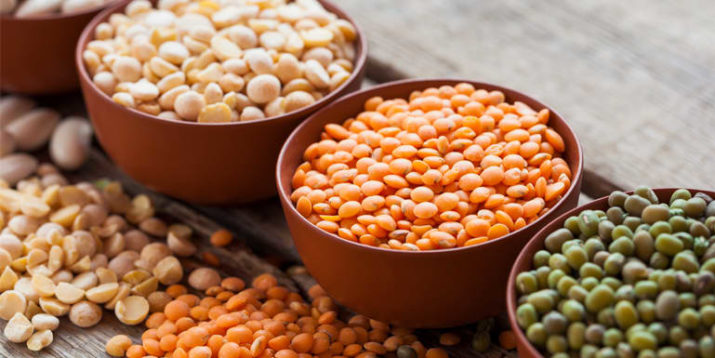What Are Pulses and Should You Be Eating Them?

If you have a food-maven or know-it-all nutrition type in your life, you’ve heard of pulses. If not, you’re probably wondering why they’re plural here (a pulse means you’re alive, right?).
Turns out, you already know them, just by other names like beans, peas, lentils, and chickpeas. Technically, pulses are dried legumes and cousins to fellow legumes like fresh peas, green beans, soybeans, and peanuts — basically anything that comes in a pod.
Pulses are ancient crops that date back thousands of years, but ever since the United Nations declared 2016 the International Year of Pulses, foodies and health experts alike have been spreading the word. And the timing is perfect. Plant-based diets, sustainable food, and healthy eating are on everyone’s minds. Pulses deliver on all fronts.
How to Cook Pulses
Think of pulses more like pasta than rice, and use plenty of water to cook to your desired doneness, then strain. Split peas and lentils don’t need soaking and are relatively quick-cooking, but dried beans do need to soak for hours, often overnight.
The Benefits of Pulses
Pulses are nutritional powerhouses that are 20–25 percent protein, rich in fiber, and offer folate, potassium, and iron. To help your body absorb iron from plant sources, combine pulses with a vitamin C-rich food like tomatoes (black bean salsa, anyone?) or lemons (a fresh squeeze of lemon over red lentil soup just before serving is a beautiful thing). Pulses love flavor — so add your favorites, from garlic and onions to herbs, spices, citrus zest, vinegars, and more.
They can also be stored for months without losing their high nutritional value, and when you do eat them, they’re slow to digest, and are known to be low glycemic index — meaning they can keep your blood sugar levels stable after eating them.
Finally, your inner tree-hugger will appreciate that pulses are good for the planet. According to the U.N., they can grow in regions where food is hard to grow and leave the soil healthier than it was before they were planted.
Let’s take a look at some pulses that may not be on your radar.
1. The Gourmet Bean
When you want to splurge on pulses, heirloom beans are where it’s at. Try calypso, flageolet, or scarlet runner beans. These lesser known varietals are loved for their rich taste and because they remain more al dente when cooked than the average bean. They’re also not as easy to farm, which is why they cost a little more.
2. Lentils to Love
French lentils are petite green versions of the workhorse brown lentils you may be more familiar with. They have a strong peppery flavor, and their green, bluish-black coloring means they have some of the same antioxidant properties as blueberries and other dark plant foods. They retain their shape and stay firm, making them a good choice for cold salads, side dishes, or as a ground meat substitute.
3. Charming Chickpeas
If you’ve ever eaten hummus, you’ve had chickpeas (aka garbanzo beans). These versatile pulses work great in a cold salad with roasted bell peppers, corn, garlic, mint, olive oil, and lemon juice; or in savory sides like chickpea masala or falafel.
4. The Caviar of Lentils
Beluga lentils are gorgeous, caviar-like pulses that hold their shape well, and assert a strong, earthy flavor. They taste great when mixed into whole grain side dishes. Try them in a salad of farro, cucumbers, tomatoes, diced red onions, parsley, olive oil, and lime juice.
5. Classic Black Beans
Black beans get honorable mention here for their anthocyanins, the blue-purple pigments found in a variety of dark foods like blueberries and pomegranates. Make any fresh salsa more robust by adding in black beans. Top tacos with them, or try them mashed with whole-grain breadcrumbs, minced fresh ginger, and your favorite spices for a flavorful veggie burger patty.
Check Your Pulses
A few things to note: Pulses are natural foods, so don’t be alarmed by pebbles or dust. Just pick through your pulses before rinsing and cooking.
